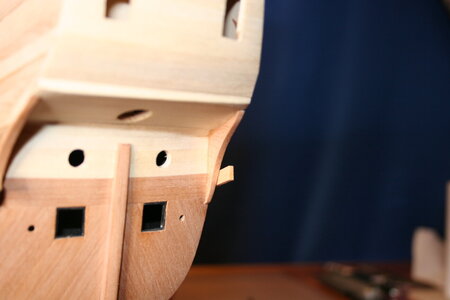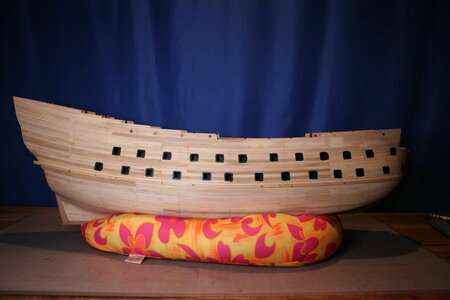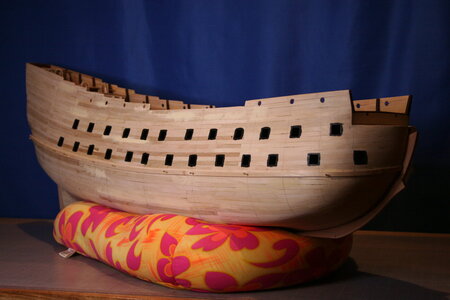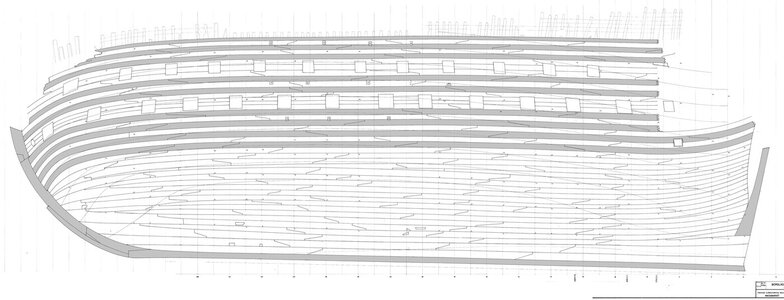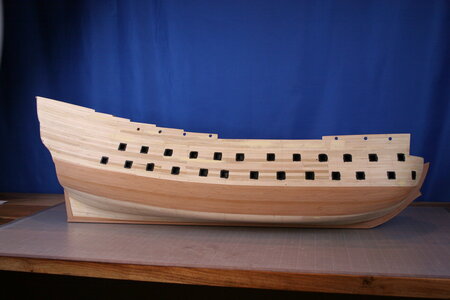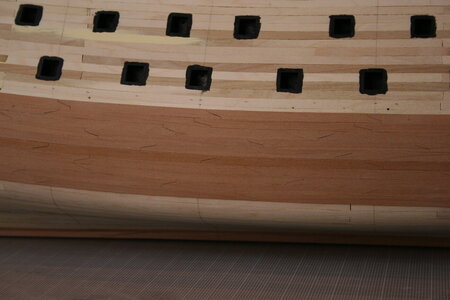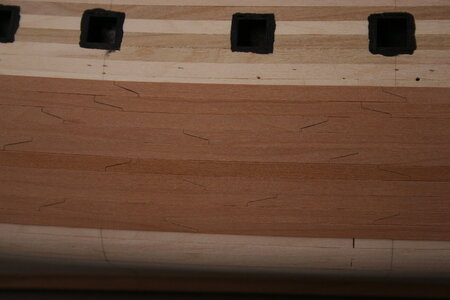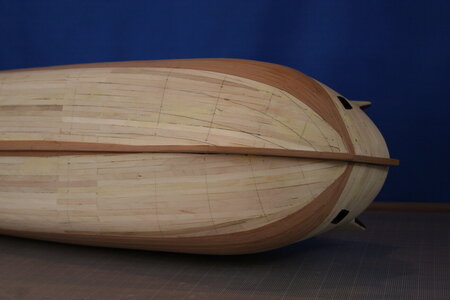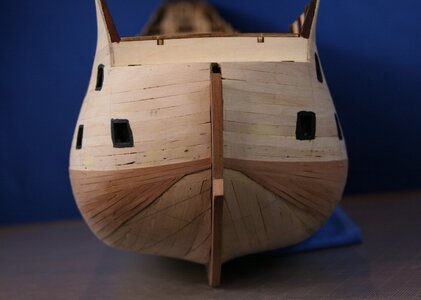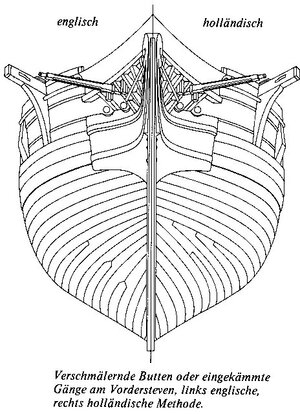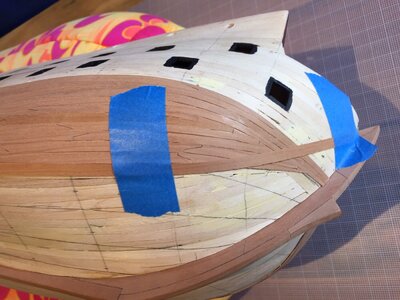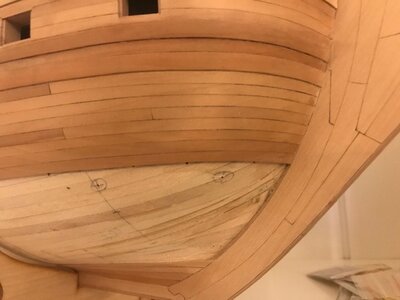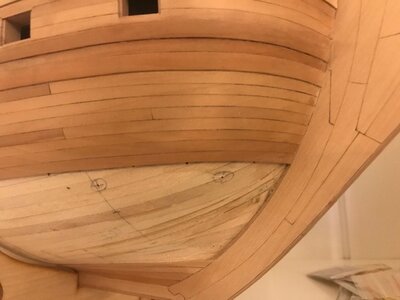Here begins the story of failure...
Having delayed planking the hull for as long as I could I decided to "give 'er a go"...
First, I laid in a temporary lower wale (thanks for this tip
@Maarten) to establish the flow of the hull planks:
View attachment 195659
View attachment 195660
Next, having abandoned my foolish notion that I would be able to simply run ship-length strips (thanks,
@Dean62 for gently pointing out what everyone on this forum already knew but never occurred to me).
I have a planking diagram that shows that the builders clearly did not use uniform plank lengths - so neither did I. To scale my planks are roughly 14 to 24 feet (give or take). Also noteworthy (in the image below) is that planks terminated when the piece of lumber terminated (thus maximizing material) instead of terminating on frames. Indeed, when the Vasa was constructed she was fabricated hull first with frames added later (or along the way).
View attachment 195667
Please also notice that there are no butt joints - all joints are scarf joints - seemingly placed randomly (again - maximize material available). The scarf joints point both directions - and you will see that little effort was made to stagger the joints. Indeed, in several locations you will see scarf joints stacked vertically.
So, here is the product to date:
View attachment 195661
View attachment 195662
View attachment 195663
But I have now hit a reef.
The material can no longer sustain the vertical bending I am doing at the bow (notwithstanding
@Maarten's brilliant suggestion that I could judiciously use CA while the PVA was drying to force thin veneer strips to bend vertically). While that worked beautifully and everything was going along swimmingly the curvature of the hull in combination with the bluff nose of the ship has conspired against me and I can no longer proceed using that technique.
Indeed I have made quite a mess of it:
View attachment 195664
View attachment 195665
Even the generally accepted Dutch planking technique (note the run of drop planks) has run out of steam...
View attachment 195666
Plus, despite my best efforts (and I think you know by now I try hard), I can now see several places where there are spaces between planks at the bow. The wood simply could not take the vertical flexion I was asking of it.
The only path forward that I can see is to abandon the desire to have every plank terminate on the sternpost/keel. Aargh!
Please help!





